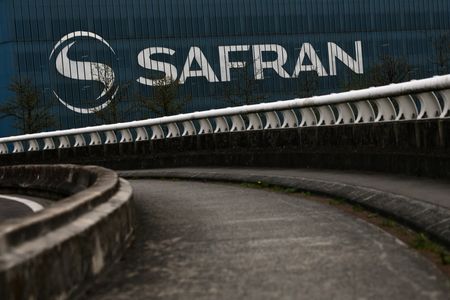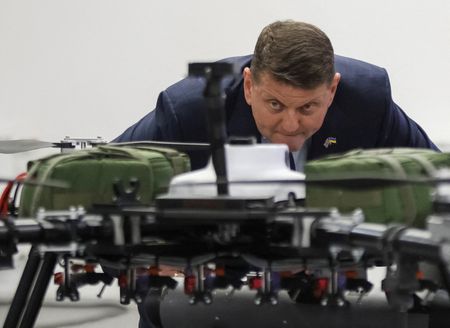PARIS (Reuters) -U.S. planemaker Boeing has returned to a more “dynamic” production profile after years of uncertainty surrounding setbacks to its 737 MAX passenger jet, the head of engine maker and key Boeing supplier Safran said on Thursday.
Production of the benchmark narrow-body jet stands at almost 38 a month, the ceiling imposed by U.S. regulators after the blowout of a door plug on an Alaska Airlines aircraft last year, Safran CEO Olivier Andries told an annual meeting.
Boeing Commercial Airplanes Vice President of Quality Doug Ackerman told reporters on Tuesday the planemaker expects to stabilize 737 MAX production at 38 airplanes a month over the next couple of months.
Safran co-produces the world’s most-sold jet engines with GE Aerospace through their CFM International joint venture. CFM’s LEAP engines power all Boeing 737 MAX and compete with Pratt & Whitney for airline contracts on the Airbus A320neo.
Safran’s upbeat tone on Boeing’s progress towards restoring jet production contrasts with a more cautious perspective from one of the world’s largest leasing firms earlier on Thursday.
Boeing and Airbus have made progress, but there is “a way to go” to get a stable, predictable production cycle, SMBC Aviation Capital CEO Peter Barrett said.
Safran’s Andries told shareholders that demand for aftermarket services for jet engines had risen in part due to delays in production of new aircraft, caused by snags in aerospace supply chains.
Airbus has said CFM is itself one of two suppliers slowing down increases in its output in the first half of the year, while CFM has said it is confident of accelerating in the second quarter. The Airbus and Boeing versions of LEAP are different sizes of engine with a broadly different set of parts.
Andries said Safran was meanwhile getting encouraging results from CFM’s wind-tunnel and other tests to demonstrate technology for a successor to the LEAP engine called RISE, designed to reduce fuel consumption and emissions by 20%.
(Reporting by Tim Hepher and Florence LoeveEditing by David Goodman and Elaine Hardcastle)











